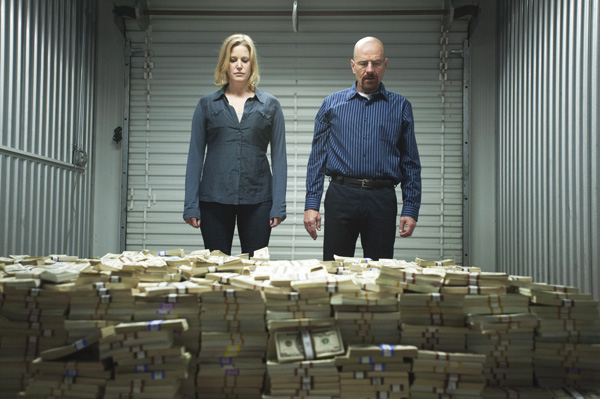Some authors go to great lengths to make their monographs up-to-the-moment. In this excerpt, the authors refer to a popular and critically acclaimed TV series. It’s a calculated risk. They use an obsession of the (fictional) characters—the money they are amassing—to tie into the very real phenomenon of hyperinflation.
Today’s excerpt comes from page 103 of the book The Evolution of Money by David Orrell and Roman Chlupaty (Columbia University Press, 2016).
“To visualize how hyperinflation can affect one’s personal savings, fans of the TV show Breaking Bad will recall the episode in season 5 in which it is shown that former chemistry teacher Walter White’s crystal meth operation has generated an impressive pile of cash, which his wife, Skyler, has put in a storage locker: ‘I rented this place and I started bringing it here because … I didn’t know what else to do. I gave up counting it. I had to. It was just so much, so fast… I just stack it up, keep it dry, spray it for silverfish.’ A ballpark estimate from a still image is that the pile contains about 850,000 bills. [Ref.: Tom Cook, Slate, September 2012.] Assuming that none are smaller than $20, that would translate to a minimum of about $17 million. A lot of money—but a dose of hyperinflation could reduce it to less than the locker rental fee. In 1922 Germany, for example, the largest denomination note was 50,000 marks. The next year, the exchange rate was about 4.2 trillion marks to USD $1, and locker full of notes wold have been worth only 1 cent. That is worse than silverfish. (Though perhaps a better comparison for the drug trade is Bolivia in 1985, when most of the country’s income came from exporting cocaine to the United Stated. A spike in inflation turns the same number of 10,000-peso notes into about US$5,000.)” ª
The book is 238 pp, or 309 pp including Notes, Bibliography, and Index.



